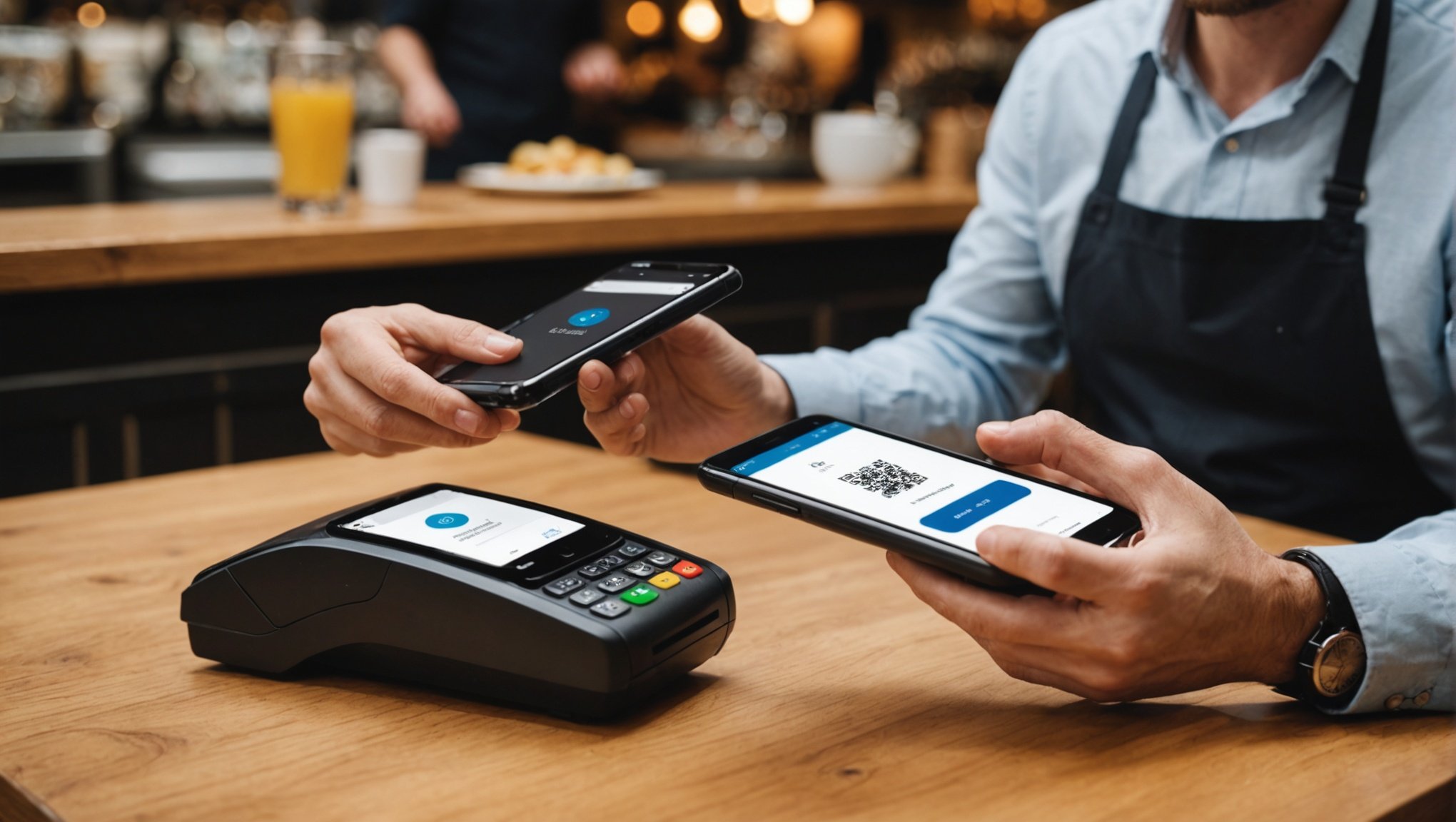As diners increasingly prefer the convenience of contactless payments, UK restaurants must adapt to meet these changing expectations. This guide explores innovative strategies to enhance customer experiences through seamless transactions. Discover how adopting contactless solutions not only boosts efficiency but also fosters a modern dining atmosphere that attracts and retains patrons. Embrace this payment evolution and elevate your restaurant’s service quality while ensuring a significant edge in a competitive market.
Understanding Contactless Payments
Contactless payment systems have revolutionised how transactions are handled in UK restaurants, enhancing both the customer experience and operational efficiency. At its core, this technology allows customers to make payments by simply tapping their card or mobile device against a reader, eliminating the need for physical contact or entering a PIN. This seamless process not only speeds up transactions but also reduces queues, significantly improving the overall dining experience.
In parallel : Validate your business idea: discover, analyze, succeed!
For customers, the benefits are clear: contactless payments are fast, convenient, and secure. They minimise the hassle of carrying cash or dealing with small change. For businesses, these systems streamline operations by reducing cash handling and the associated errors, while also offering enhanced security features that protect against fraud.
In the restaurant industry, the adoption of contactless payment systems is on the rise. Trends indicate a growing preference for digital transactions, driven by consumer demand for faster service and the ongoing shift towards a cashless society. Many UK restaurants are embracing this technology to stay competitive, improve customer satisfaction, and cater to the tech-savvy clientele.
Also to see : Top strategies to evaluate your business idea for success
Overall, contactless payments are transforming the dining landscape, offering a win-win situation for both customers and businesses. As this trend continues, restaurants are likely to see increased efficiency and enhanced customer loyalty.
Implementing Contactless Payment Systems
Implementing contactless payment systems in UK restaurants involves strategic planning and careful consideration. The first step is selecting a suitable contactless payment provider. Evaluate providers based on transaction fees, security features, and customer support. Consider whether they offer seamless integration with your existing point-of-sale (POS) technology.
Integration with existing POS systems is crucial. Ensure that the chosen contactless payment solution is compatible with your current technology to avoid disruptions. This might involve updating software or hardware, so factor in potential costs and time for these upgrades. A smooth integration guarantees that transactions are processed efficiently, enhancing the overall customer experience.
When implementing these systems, restaurants must consider several key factors. Payment processing speed is vital, as it directly impacts customer satisfaction. Additionally, ensure that the system provides robust security measures to protect against fraud. Training staff on the new technology is also essential, as they need to be comfortable handling the system to assist customers effectively.
Finally, assess the scalability of the contactless payment solution. As your business grows, the system should be able to accommodate increased transaction volumes without compromising performance. By focusing on these aspects, restaurants can successfully implement contactless payments, ultimately benefiting both their operations and their customers.
Comparing Contactless Payment Solutions
In the evolving landscape of contactless payments, choosing the right payment solutions can significantly impact a restaurant’s efficiency and customer satisfaction.
Overview of Popular Payment Solutions
The market offers a range of payment solutions including mobile wallets like Apple Pay and Google Wallet, and card readers from providers such as Square and SumUp. Each solution has distinct features tailored to different business needs. Mobile wallets are favoured for their convenience, allowing customers to pay using smartphones. In contrast, card readers offer versatility and are often used in conjunction with traditional payment methods.
Pros and Cons of Each Solution
Mobile wallets stand out for their speed and security, eliminating the need for physical cards. However, they require customers to have compatible devices. Card readers are user-friendly and can process both contactless and chip payments, but they may incur higher transaction fees. Additionally, some card readers require an internet connection, which could be a limitation in areas with poor connectivity.
Cost Analysis for Restaurants
When analysing costs, consider both upfront expenses and ongoing fees. Mobile wallets typically involve lower setup costs but may charge higher transaction fees. Card readers often come with initial hardware costs, but some providers offer competitive transaction rates. Evaluating these factors helps ensure a balanced decision that aligns with the restaurant’s budget and operational needs.
Enhancing Customer Experience with Contactless Payments
Incorporating contactless payments in restaurants significantly boosts customer satisfaction by streamlining the checkout process. This technology enables quick and effortless transactions, allowing customers to complete payments with a simple tap. Consequently, this reduces wait times, enhancing the overall service speed and efficiency in busy dining environments.
By minimising the time spent on transactions, restaurants can serve more customers in a shorter period, leading to increased turnover and improved customer flow. This efficiency is particularly beneficial during peak hours, where long queues can deter potential customers. The swift nature of contactless payments ensures a smooth dining experience, contributing to higher levels of customer satisfaction.
Moreover, contactless payment systems offer opportunities for personalising customer interactions. The data collected from these transactions can provide valuable insights into customer preferences and spending habits. Restaurants can leverage this information to tailor their services, offering personalised promotions or loyalty programmes that align with individual customer behaviours. This personalised approach not only enhances the dining experience but also fosters customer loyalty.
In summary, the integration of contactless payments in restaurants not only expedites transactions but also enriches the customer experience by offering convenience, reducing wait times, and enabling personalised service. This technological advancement is a pivotal element in meeting the evolving expectations of today’s diners.
Case Studies of UK Restaurants
In the realm of contactless payments, several UK restaurants stand out as success stories. These establishments have not only embraced the technology but have also reaped significant benefits from its adoption.
One such example is a popular London-based chain that implemented contactless payments early on. This move resulted in a notable increase in customer throughput, especially during peak hours. By reducing transaction times, the restaurant was able to serve more customers efficiently, leading to a surge in sales.
Another success story is a small independent café in Manchester. After adopting contactless payments, the café reported enhanced customer satisfaction. Patrons appreciated the convenience and speed of transactions, which in turn fostered loyalty and repeat visits.
The impact of contactless payments on these restaurants is multifaceted. Beyond improving customer experience, the technology has streamlined operations by reducing cash handling errors and minimising the risk of theft. Moreover, data insights from these transactions have allowed restaurants to tailor their marketing strategies, enhancing customer engagement.
Lessons from these early adopters highlight the importance of training staff and ensuring robust security measures. By learning from these examples, other restaurants can successfully integrate contactless payments, ultimately benefiting both their operations and customer relations.
Security Measures for Contactless Payments
In the realm of contactless payments, ensuring robust payment security is paramount. This involves implementing comprehensive security protocols that safeguard transactions and protect customer data. Key measures include encryption, tokenisation, and two-factor authentication, which collectively work to prevent unauthorised access and potential fraud.
Common security concerns in contactless payments revolve around fraud prevention and data breaches. To address these issues, restaurants can employ advanced encryption technologies that convert sensitive information into unreadable code during transmission. Additionally, tokenisation replaces card details with a unique identifier, ensuring that even if data is intercepted, it remains unusable.
Legal compliance is another critical aspect of data protection. Restaurants must adhere to regulations such as the General Data Protection Regulation (GDPR) in the UK, which mandates strict standards for handling personal information. Compliance involves regular audits, secure data storage, and transparent privacy policies, ensuring customers’ trust and confidence in the payment process.
By prioritising these security measures, restaurants can mitigate risks associated with contactless payments. This not only protects their business operations but also enhances customer satisfaction by providing a secure and reliable payment experience.
Training Staff for Contactless Payment Implementation
Implementing contactless payment systems successfully hinges on effective staff training. Ensuring that employees are well-versed in the new technology is crucial for maintaining operational efficiency and delivering excellent customer service.
Begin by highlighting the importance of training sessions. These should be comprehensive, covering both the technical aspects of the system and the practicalities of everyday use. It’s essential to focus on hands-on training, allowing staff to familiarise themselves with the equipment and software. This approach not only builds confidence but also ensures that employees can assist customers efficiently.
Best practices for training include interactive sessions, where staff can ask questions and troubleshoot potential issues. Incorporating role-playing scenarios can be particularly beneficial, as they simulate real-world situations that employees might encounter. Additionally, consider using digital resources such as video tutorials and step-by-step guides, which staff can refer to as needed.
Ongoing support is vital. Establish a system for continuous learning, where employees can access resources and receive updates on system enhancements. Regular feedback sessions are also important, allowing staff to share their experiences and suggest improvements. By prioritising staff training, restaurants can enhance their operational efficiency and ensure a seamless customer service experience.
Promoting Contactless Payment Options to Customers
Engaging customers with contactless payment options requires strategic marketing strategies and effective communication. It’s essential to clearly convey the benefits of these systems, such as speed, convenience, and security, to encourage adoption.
Effective Communication Strategies
Begin by crafting clear, concise messages that highlight the advantages of contactless payments. Use both digital and physical platforms to reach a wide audience. In-restaurant signage, such as posters or table tent cards, can effectively inform customers about these payment options.
Utilizing Social Media and In-Restaurant Marketing
Leverage social media to create buzz around your contactless payment systems. Share engaging content, like short videos or customer testimonials, to demonstrate the ease and benefits of using contactless payments. Consider running promotional activities, such as discounts for using contactless methods, to incentivise customers.
In-restaurant marketing is equally crucial. Train staff to promote contactless payments during interactions with customers, providing hands-on assistance if needed. This personal touch can enhance customer engagement and ease any apprehensions about new technology.
Gathering Customer Feedback
Feedback is invaluable for refining your approach. Use surveys or comment cards to gather insights on customer experiences with contactless payments. Analyse this data to identify areas for improvement and tailor your services to better meet customer needs. This iterative process not only improves services but also fosters customer loyalty.
Challenges and Solutions in Adopting Contactless Payments
Adopting contactless payments in restaurants presents several implementation challenges. One common issue is the integration of new systems with existing technology. This often requires updates to hardware and software, which can be costly and time-consuming. Additionally, businesses may encounter operational hurdles such as staff resistance to change or a lack of technical expertise.
To overcome these obstacles, it is essential to adopt best practices. Start by selecting a payment system that offers seamless integration with your current infrastructure. This reduces potential disruptions and ensures a smooth transition. Furthermore, providing comprehensive training for staff can alleviate resistance and build confidence in using the new technology. Hands-on sessions and ongoing support are crucial for effective troubleshooting.
Looking ahead, future trends in contactless payments may include advancements in mobile wallet technology and increased adoption of biometric authentication. These developments aim to enhance security and convenience, further streamlining the payment process. Restaurants should stay informed about these trends to remain competitive and cater to evolving consumer preferences.
By addressing these challenges proactively and embracing emerging technologies, restaurants can successfully navigate the complexities of contactless payment adoption, ultimately improving operational efficiency and customer satisfaction.






